Lenten veils, arrays and vestments
/
Lenten veils, arrays and vestments
March 7, 2023
During Lent, the Cathedral joins many churches from the Anglican Communion and beyond in observing the tradition of veiling its crucifixes and icons. A giant Lenten array covers the High Altar Reredos and the vivid silk altar frontals and vestments used throughout the year are swapped for course undyed fabrics.
Lent ('Fortieth') is a solemn Christian observance beginning on Ash Wednesday and ending around six weeks later, the night before Easter Sunday. The purpose of Lent is the preparation of the believer for Easter with a 40-day period of fasting, prayer, and penance to draw themselves near to God. This period replicates the account of the sacrifice of Christ's journey into the wilderness for 40 days.
The Cathedral joins churches from many provinces of the Anglican Communion, as well as the Roman Catholic Church, Western Rite Orthodoxy and Lutheranism, in observing the tradition of veiling its crucifixes and icons during Lent. The veiling was associated with the gospel account of Passion Sunday (John 8:46–59), in which Jesus "hid himself" from the people.
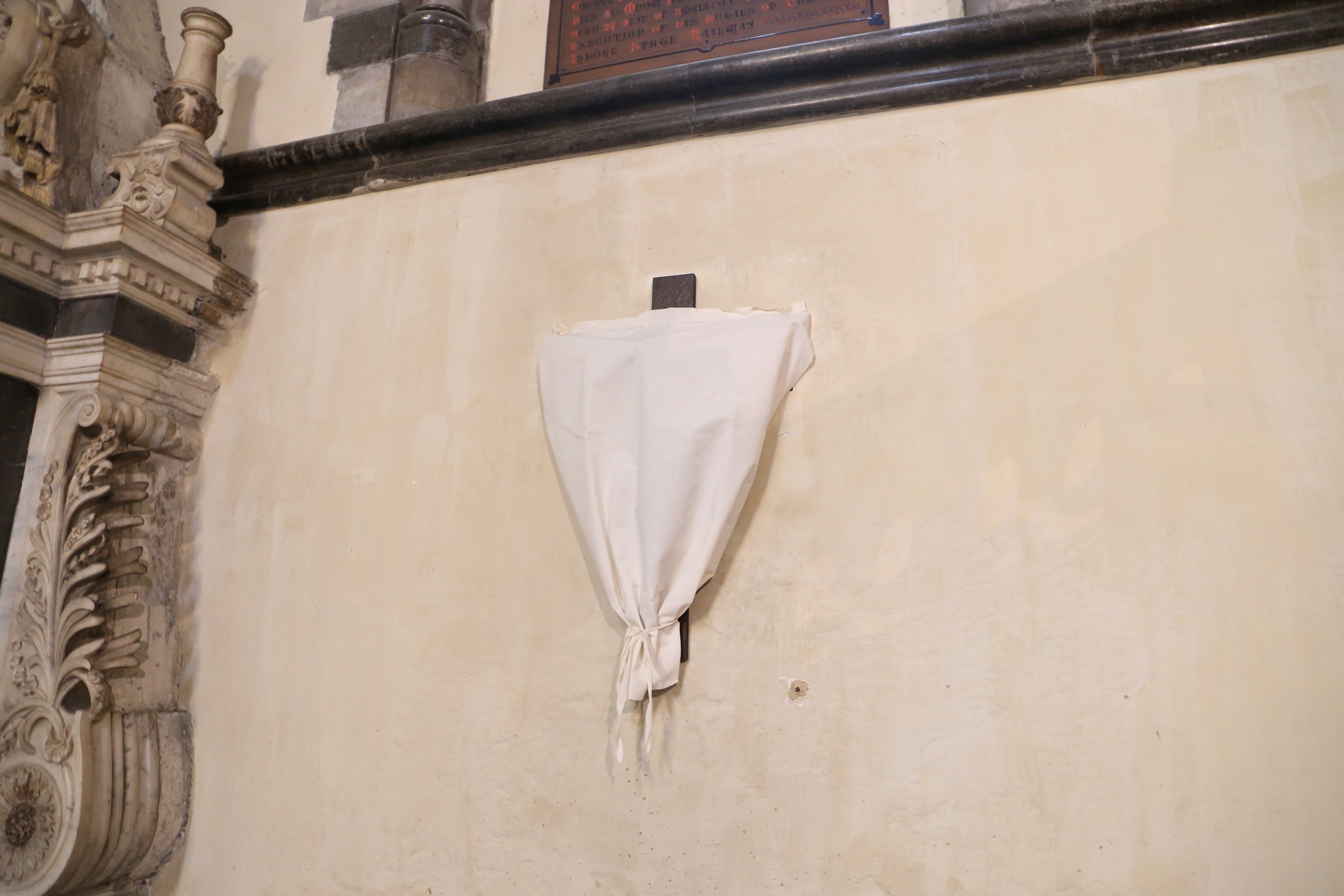
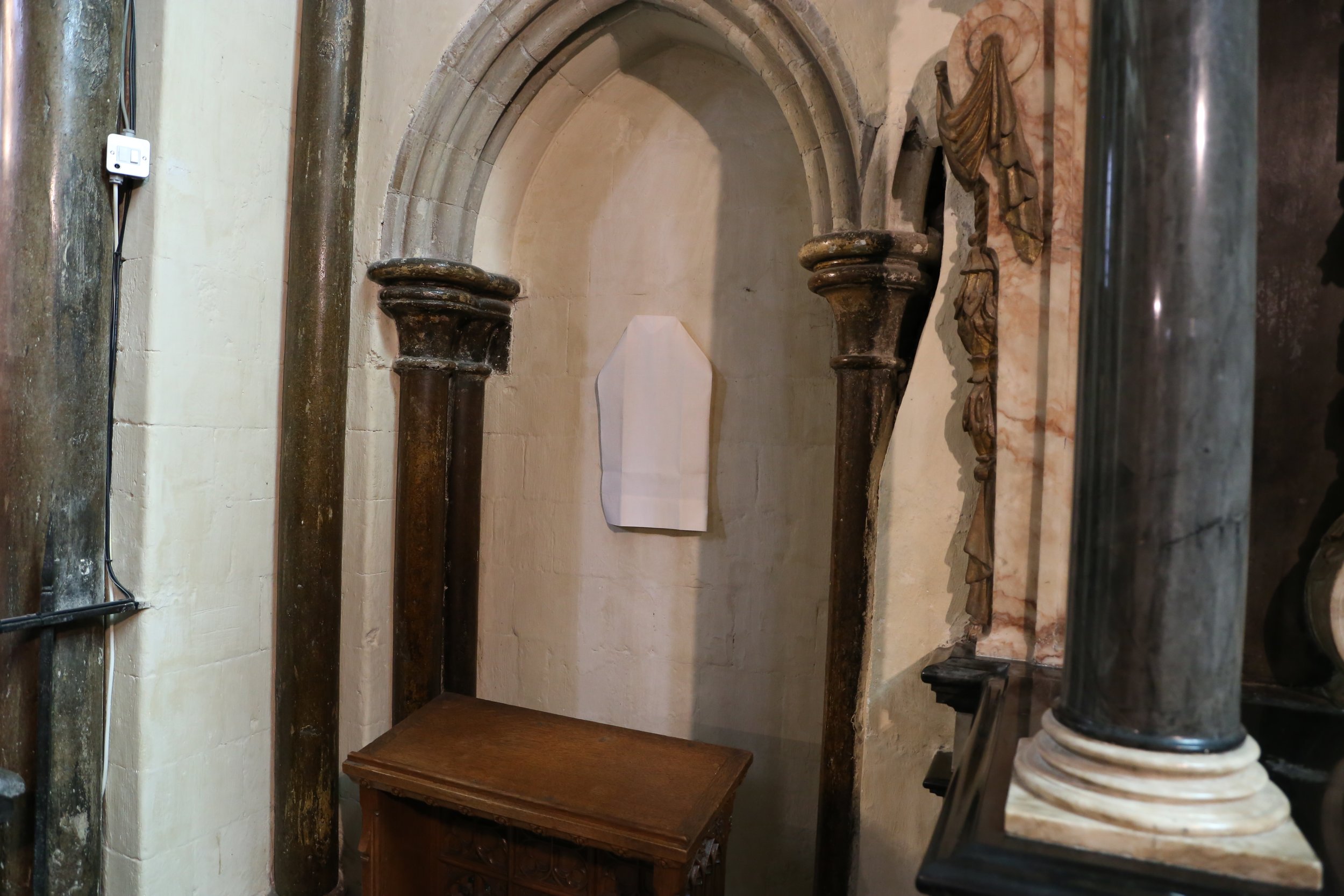
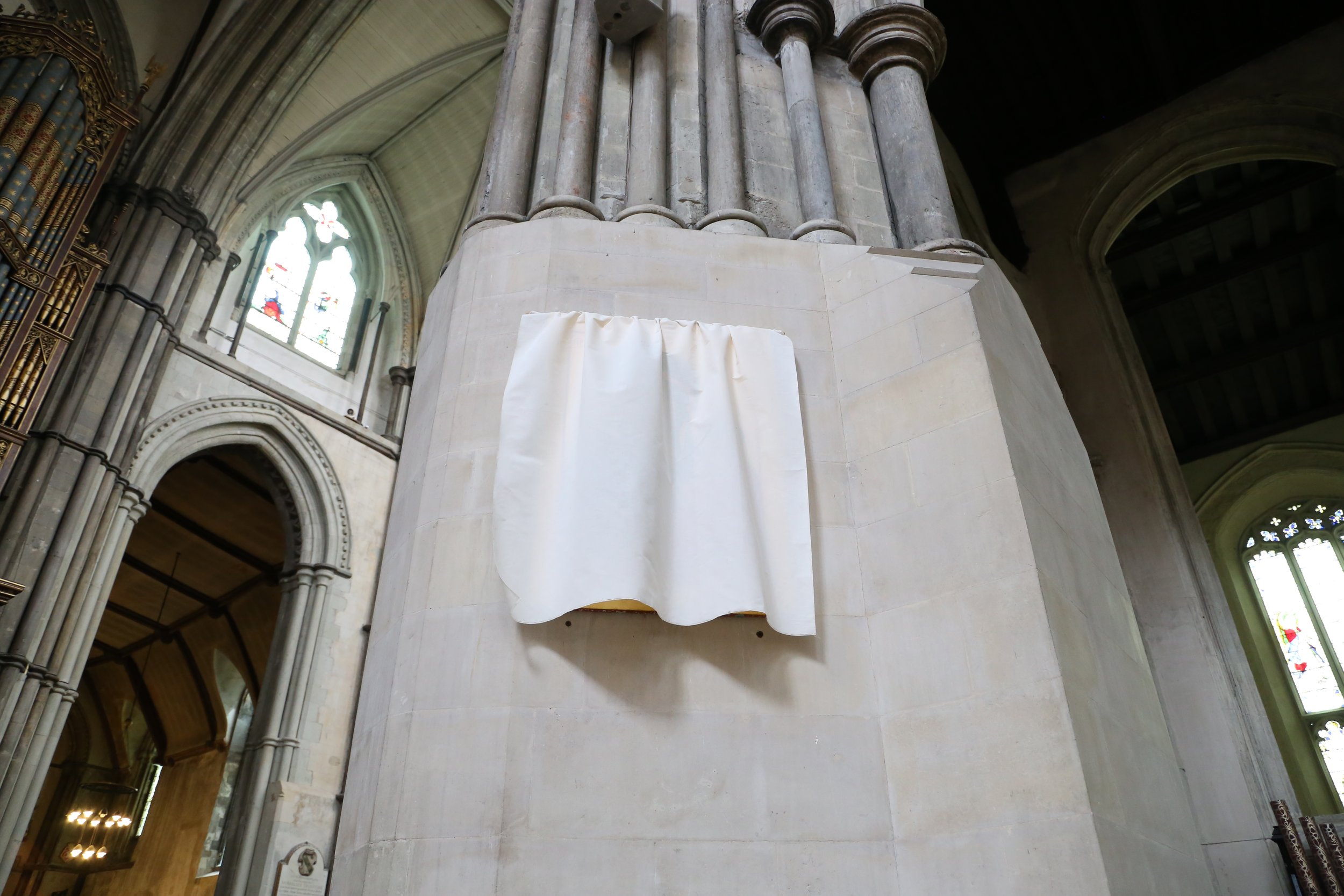
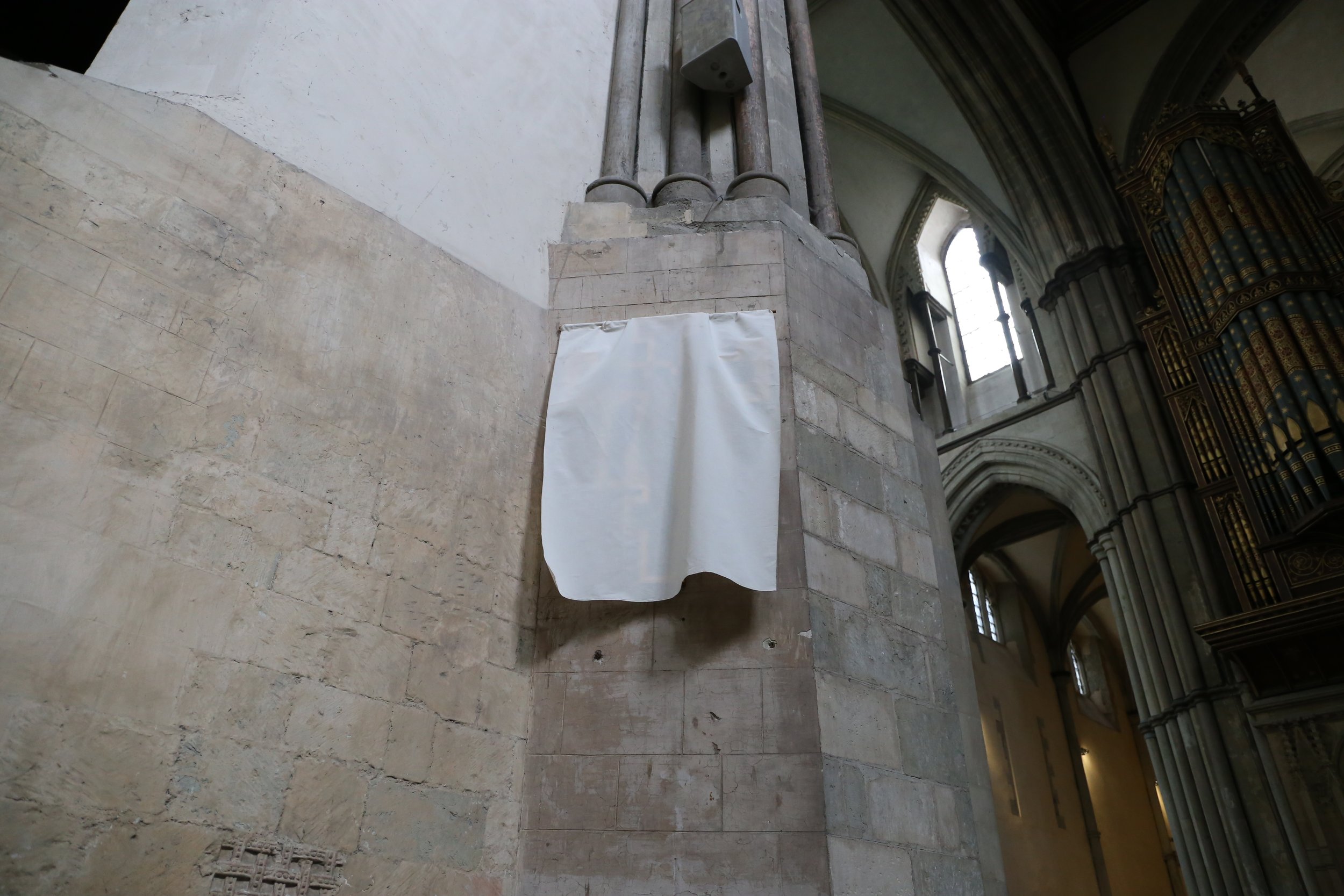
Small lenten veils covering the icons and crucifix around the Cathedral.
The Cathedral has in the past used veils, a colour traditionally associated with Lent. The Roman soldiers clad Jesus in a purple robe, the colour associated with triumph and Emperors. Along with the crown of thorns, the purple robe was used to mock Jesus’ claim of authority as ‘King of the Jews’. In the 1990s, during the tenure of Canon Precentor John Armson, the Cathedral Embroiderers produced a set of undyed canvas altar frontals. The drab colours and thick course fabric embodies Jesus’ example of plain living, humility, detachment from the world and total devotion to God. In-keeping with the new altar frontals, the veils used today are of beige calico (an unbleached cotton).
The Quire Altar frontal features a focus comprising the Instruments of the Passion: the crown of thorns, the crucifix and nails used in Jesus’ crucifixion, the hyssop branch and sponge from which he clenched his thirst before his final words, and the lance used to confirm his death.
A huge veil - or Lenten array - is used to cover the High Altar Reredos depicting Jesus at the Last Supper. The High Altar frontal features the crown of thorns and the hands of Christ featuring the wounds of crucifixion raised in the hand of Benediction; a blessing usually given at the end of a service.
A set of canvas vestments were produced by the Cathedral Embroiderer’s around the same time as the Lenten Veil. In 2020, these vestments were altered with the addition of the crown of thorns to form a coherent aesthetic with the frontals. The purple vestments are used instead during the period of Advent.
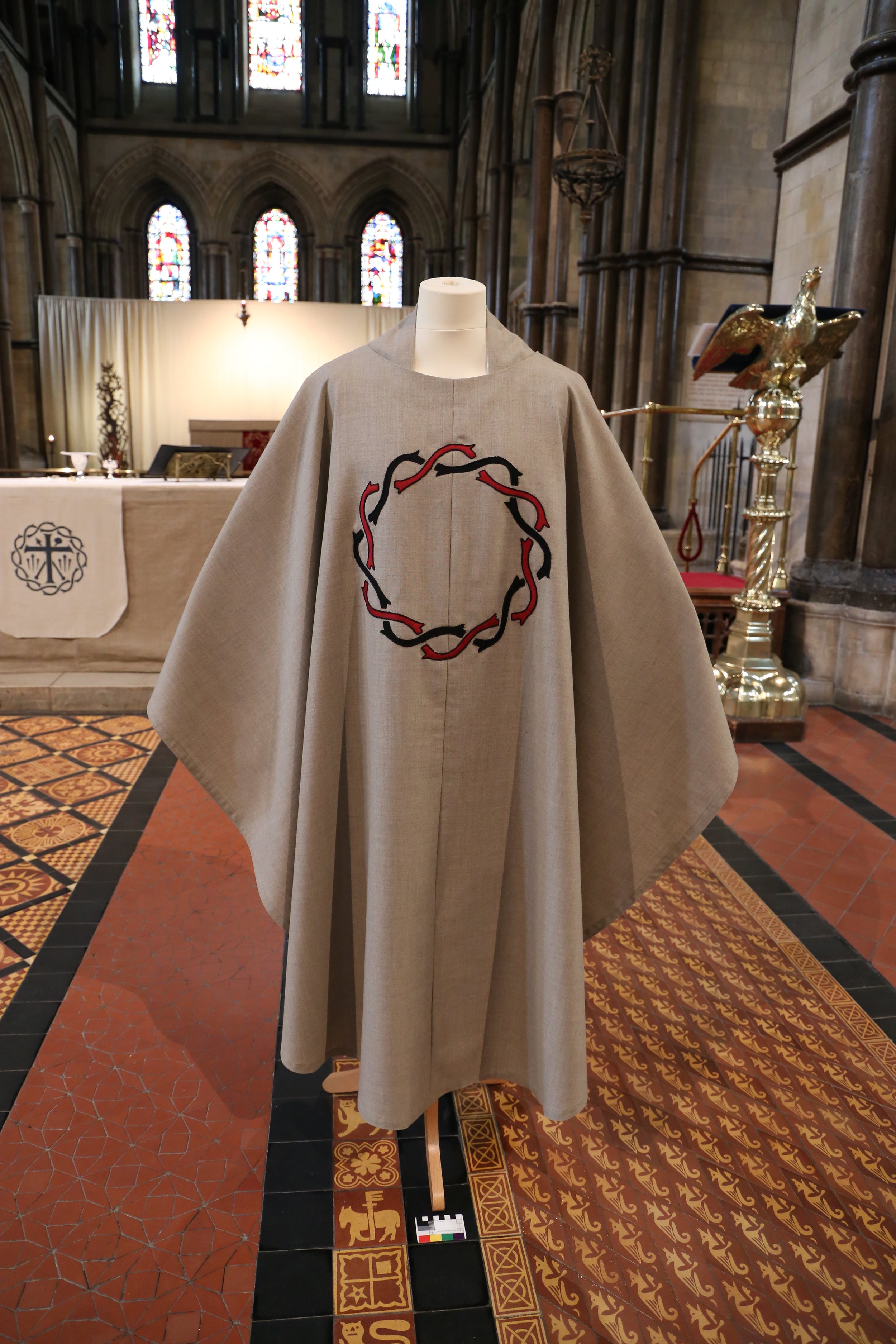
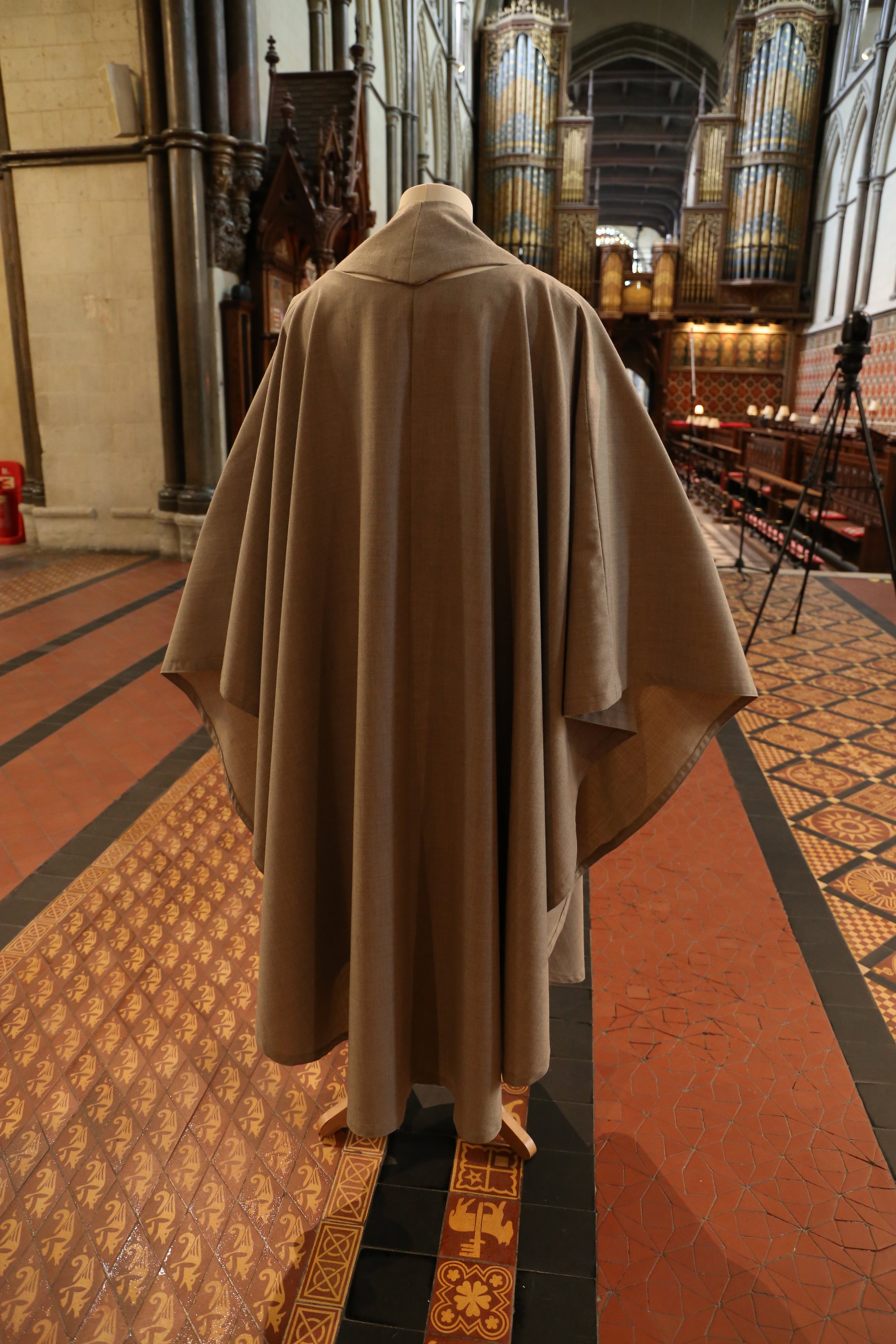
On Good Friday, the Lenten array and veils are removed, the altars are redressed and lamps rehung (but not yet relit). The Cathedral is bedecked in flowers and Easter lilies and the Easter Garden (sepulchre) is constructed and decorated. At the Easter Liturgy, the Easter Candle is lit and the Cathedral comes out of darkness into new light. Following the Eucharist of Easter Day, and the Blessing of the Easter Garden, the Easter Candle remains in place on the Pulpitum Platform and is lit for every service up to and including Pentecost.
Jacob Scott
Heritage Officer
With thanks to Joseph Miller, Head Verger and the Guild of Embroiderers.
The Cathedral relies on over 300 volunteers in supporting services caring for the collections and a wide range of day-to-day activities.







